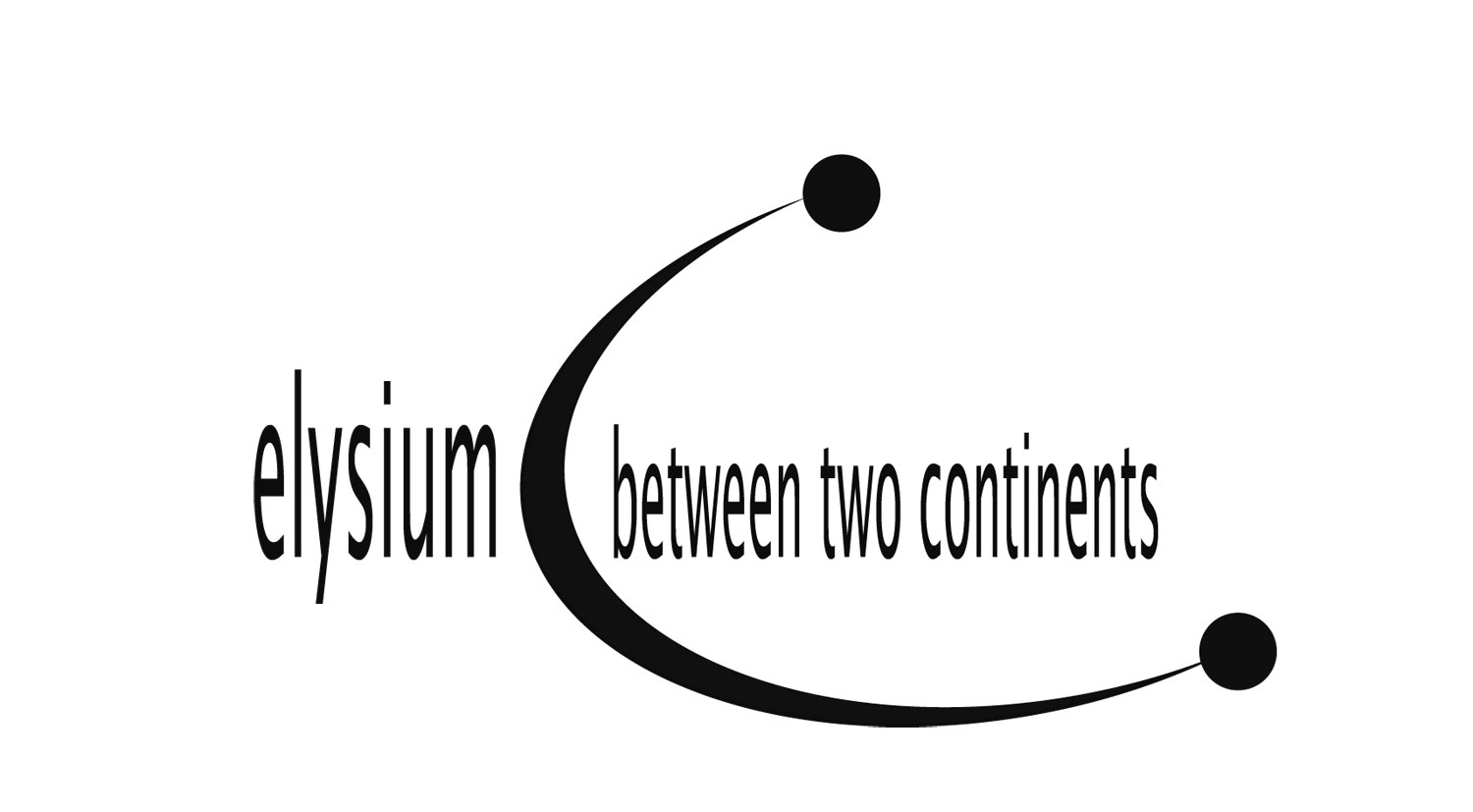2018 marks the 80th anniversary of the “Anschluss”, the annexation of Austria to Nazi-Germany. In the wake of the destructive Nazi-regime and World War II, six million Jews became victims of the Holocaust and were detained and killed in concentration camps. In commemoration, the ACF Washington is honoured to host the literature reading program „Hate is a Failure of Imagination“, presented by the founder and Executive Director as well as the Program Director of Elysium - Between Two Continents, a non-profit organization dedicated to artistic and creative dialogue and mutual friendship between the United States of America and Europe.
HATE IS A FAILURE OF IMAGINATION
A LITERARY COLLAGE - AN ENCOURAGING TESTIMONY
with texts by
Alice Herz-Sommer, Georg Kafka, Paul Aron Sandfort,
Leo Strauss, Viktor Ullmann, and Ilse Weber
Under the patronage of Prof. Felix Kolmer,
Advisor to the Foundation for Holocaust Victims
Concept and Introduction: Michael Lahr
Recitation: Gregorij H. von Leïtis
The recent wave of terror attacks on the one hand and of right-wing hate crimes on the other hand have drastically reminded us, how hatred can blind people and how much destruction and violence an inhuman ideology can unleash. The artists who were imprisoned in Theresienstadt have defied the Nazis’ hatred and contempt for them in their own way. The words of these artists can encourage us today, to break through the spiral of hate, violence and destruction.
The Nazis relentlessly stoked hate against the Jews. They tried to dehumanize them and degrade them to mere numbers. But the artists who were imprisoned in Theresienstadt, countered this hate – which Graham Greene so aptly described as a failure of imagination – with a powerful offensive of imagination. With their artistic phantasy, their creative power, their inventive energy they continuously proved wrong the national-socialist dictum, that Jews were sub-human and as such incapable of any real culture.
The literary collage “Hate is a Failure of Imagination“ is a testament to the power of imagination and to the profound love and humanity of the artists who were imprisoned in the ghetto and concentration camp Theresienstadt. The unshakable hope that human decency will prevail and that humanity will be stronger than all the attempts to crush it, this is the message conveyed by the texts of Alice Herz-Sommer, Georg Kafka, Paul Aron Sandfort, Leo Strauss, Viktor Ullmann, and Ilse Weber. Especially today it is more important than ever, to carry this message of hope, this strong positive signal out into the world. The life-affirming testimony of those artists can comfort, inspire and embolden us today.
In the infamous extermination machinery of the NS-Regime, Theresienstadt (or Terezin) played a very special role. Originally established as a collection camp for the Jews who lived in the so-called “Protectorate of Bohemia and Moravia”, it served as a “model ghetto” after the Wannsee Conference. It was a propaganda instrument to distract the world from the Final Solution. Especially prominent Jews and highly decorated Jewish veterans from World War I were brought to Theresienstadt. In the summer of 1944 a delegation of the International Red Cross visited Theresienstadt. For a certain period of time the inmates of Theresienstadt were granted certain privileges. They had the chance to be active artistically and could organize readings, concerts, plays, even cabaret performances as part of the so-called “Leisure Organization” (Freizeitgestaltung). But behind this cynical disguise, the systematic death machinery of the Holocaust continued to function without constraints. Of the 140,000 Jews deported to Theresienstadt, about a quarter died on site due to hunger, illness, malnourishment, bad hygiene, and exhaustion. 88,000 people were sent on transports to the extermination camps in the East.
When: April 19, 2018 – 7:00 pm
Where: Austrian Cultural Forum/Embassy of Austria, 3524 International Court, NW, Washington, DC. 20008
Biographies of the Artists from Theresienstadt
The pianist Alice Herz-Sommer, born in Prague in 1903, survived the Holocaust and died in 2014 at the age of 110 in London. “Music saved my life,“ she used to say. Her wise aphorisms are evidence of her unshakable optimism and her deep kindness towards humanity. When confronted again with the atrocities of the Holocaust during the Eichmann trial in Jerusalem, Alice came to the conclusion: “One must not hate. Man must not be allowed to learn how to hate!”
Georg Kafka a distant relative of Franz Kafka, born in Teplice in 1921 was deported to Terezin in 1942. When his mother was selected for a transport to the East in 1944, he voluntarily followed her. He died in the concentration camp Schwarzheide. In Terezin he wrote several poems, such as The Death of Orpheus.
Paul Aron Sandfort, born in Hamburg in 1930, who died in Copenhagen in 2007, depicted his experiences as child in Theresienstadt many years later in several plays and novels.
The Viennese cabaret artist Leo Strauss, who also was murdered in Auschwitz in 1944, tried to divert his fellow inmates from the sufferings of life in the camp with his tartly pointed cabaret programs. At least for the duration of those programs he wanted to cheer them up.
Viktor Ullmann, who was born in Teschen in 1898 as the son of an officer of the Austro-Hungarian Empire, wrote a highly philosophical essay in Theresienstadt titled “Goethe and Ghetto”. His writings as well as his compositions from Theresienstadt were saved, although he himself was killed in Auschwitz in 1944.
Ilse Weber (born in Moravia in 1903) wrote more than 60 poems in Theresienstadt that describe daily life in the camp in great detail. Before she was deported to Auschwitz in 1944, Ilse’s husband Willi Weber buried a majority of these poems in a bag in a distant corner of the camp. Ilse Weber was immediately killed in Auschwitz, but her poems were rescued in May of 1945 by her husband who survived the Holocaust.
Biographies of the Performers
Photo | (c) Letizia Mariotti
Gregorij H. von Leïtis, Founding Artistic Director of Elysium, will recite the texts of the artists from Theresienstadt. For 50 years he has been working as a director at various theatres in Europe and the US. In 1985 he received the New York Theater Club Prize for this direction of Bertolt Brecht's “The Jewish Wife”. In the summer of 2003, he was awarded the Knight’s Cross of the Order of Merit by German Federal President Johannes Rau for his merits in promoting understanding between peoples by way of art. In April of 2016 the President of the Republic of Austria Dr. Heinz Fischer bestowed the Austrian Cross of Honor for Science and Art on him.
In 1983, he founded the Elysium Theater Company in New York, which he headed as Artistic Director till 1990, when he was called to be the Intendant (Artistic Director) of the Landestheater Mecklenburg, Neustrelitz. Since 1993 he has been Artistic Director of “Elysium - between two continents”. In 1985, Gregorij von Leïtis founded the Erwin Piscator Award Society, which annually confers the Erwin Piscator Award. Since 1987, he has been committed to the integration of marginal social groups by way of theater. With the Elysium Theater Company, he created the program Theater for the Homeless. "In a city where high-style but meaningless shows easily cost $50 per ticket, while next door hundreds stand in line to get a little pasta and an apple, it is encouraging to realize, that a theater makes its talents available to people who can't very often get to see a play," as the Village Beat wrote about it in 1990.
Since 1992 Gregorij von Leïtis had been active as guest director, first at the State Theater in Linz, later also at the State Theater in Bregenz. In 1998 he produced Kafka's “A Report to an Academy” at London's Bloomsbury Theater, Ullman's opera “The Emperor of Atlantis” at the Guggenheim Museum and at the Miller Theater in New York, as well as the Italian premiere of Krenek's chamber opera “What Price Confidence?”.
In 1997, he recited the New York premiere of “The Lay of Love and Death of the Cornet Christoph Rilke”, one of the last works which the composer Viktor Ullmann was able to finish in the ghetto and concentration camp Theresienstadt, before he was deported to Auschwitz in October 1944 and murdered there. Since then, he has performed this composition for speaker and piano internationally in more than 30 cities.
With Michael Lahr, he founded The Lahr von Leïtis Academy & Archive in 1995, whose president he is.
Photo | (c) Letizia Mariotti
Michael Lahr studied philosophy and adult education at the College of Philosophy in Munich and at the Jesuit University Centre Sevres in Paris. He is author and editor of the book “The Erwin Piscator Award”, and a co-author of the volume of essays “Bilder des Menschen” (Images of Man). In the Karl Jaspers Yearbook 2014, Offener Horizont, he published an essay on Erwin Piscator and World War I: “Reconstructing the birth of his Political Theater”. As a specialist in Erwin Piscator, the founder of the political and epic theater, he curated the exhibit “Erwin Piscator: Political Theater in Exile”, which so far has been seen in Bernried, New York, Catania, Salzburg, and Munich.
As the program director of Elysium he has unearthed numerous works by artists who had to flee their home country under the pressure of the Nazi regime, or who were murdered. Many of these compositions were performed for the first time in concerts in Europe and the U.S. He gives introductory lectures for all Elysium programs. At the same time, he lectures regularly on questions of general social and political significance. Among other places, he has lectured at St. Norbert's College in De Pere, WI, at the American Academy Berlin, at the Leo Baeck Institute New York, at the Ludwig Maximilians University Munich, at Deutsches Haus at NYU, at the university in Catania, at the Mozarteum University in Salzburg, at the Vytautas-Magnus University Kaunas, at the University of the State of Florida in Tallahassee, and at the State Institute for the Science of Art in Moscow.
Michael Lahr is the Executive Director of The Lahr von Leitis Academy & Archive, which holds materials of artists such as Erwin and Maria Ley Piscator, Egon Lustgarten, Anna Moffo, Alice Herz-Sommer and others. He is also the Chairman of the Erwin Piscator Award Society and the editor of The Bridge Journal.
ABOUT ELYSIUM
Since the founding in New York City in 1983, Elysium - Between Two Continents has established itself as a vital force at the intersection of American and European cultures, fostering artistic and creative dialogue and mutual friendship between the United States of America and Europe. Fighting against discrimination, racism and anti-Semitism by means of art are at the heart of Elysium’s mission .Elysium’s special concern has been to unearth and present works of artists exiled and persecuted by the fascist regimes of the mid twentieth century.






